#protection of natural habitats india
Text
The Northeastern state of Nagaland is one of the most ecologically rich and important regions in India; it falls in the Indo-Malayan global biodiversity hotspot and is home to many endangered and endemic species. The CCA project focussed on species like the Blyth’s tragopan, Chinese pangolin, Western hoolock gibbon and Indian hornbill.
2 notes
·
View notes
Text
Animal of the Day!
Gaur (Bos gaurus)
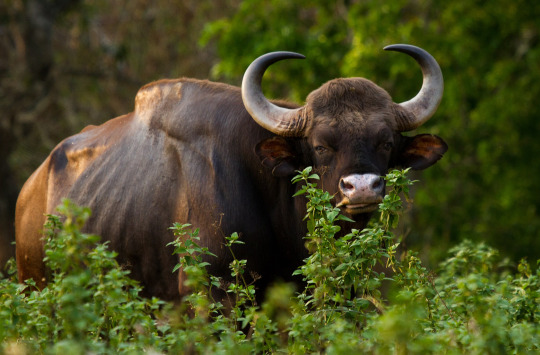
(Photo from World Land Trust)
Conservation Status- Vulnerable
Habitat- India; Southeast Asia
Size (Weight/Length)- 1200 kg; 350 cm
Diet- Leaves; Grasses; Seeds; Flowers
Cool Facts- The gaur is the world’s largest species of wild cattle. These giant water buffalos spend their days in small herds led by a matriarch. When a bull approaches a group of cows, he has to be cautious out of fear of facing a dozen pairs of 100 centimeter horns. Gaur tromp through large areas of jungle in search of food and can strip trees of their bark when leaves are scarce. Due to their absolutely massive size, gaurs have very few natural predators. Only tigers and saltwater crocodiles are capable of taking down adults. Gaur protect their own and form a protective circle around calves when threatened by a tiger, often chasing the tiger off. Gaurs are highly protected due to their dwindling population, but poaching for their meat and as a trophy remains as their largest threat.
Rating- 13/10 (The bodybuilders of the bovine world.)
#Animal of the day#Animals#Mammals#Cattle#Buffalo#Saturday#May 27#Gaur#biology#science#conservation#the more you know
184 notes
·
View notes
Text
Kurdish ecology. Indigenous seeds and food heritage. Palestinian edible plant archive. Ezidi foods and reverence for landscapes. The narratives of “exiled foods.” Suryani, Zaza, Kurdish, and Armenian displacement. Okra and mustard greens. Dispossession and native plants in Anatolia and the Mediterranean. Imagining alternative worlds and affirmative care structures. Landscapes breathing in slow, deep time. Seed exchanges and “entanglement of solidarity” across regions in defiance of military surveillance, industrial monoculture, and extraction. “Homeland is not where you were born, it is where you are fed.”
---
Okra is strong and can survive the precarity of exile and migration: it can be found in a Bangladeshi vegetable stand in Rome, an Ezidi camp in Diyarbakır, or a guerilla garden along the highway in Kowloon. Okra is one of the world’s oldest cultivated crops, spread by the processes of colonization and the slave trade from Africa and India to the Mediterranean and westward to the new world. Its versatility makes it well suited for states of dispossession and survival. [...] The colonization and standardization of landscapes is always rooted in controlling the cultivation and erasure of localities. [...] Today, the same region [Anatolia and the Mediterranean] is inundated with wars and oppressions that destroy not only biodiversity but also the intangible heritage of ingredients and their narratives across our earth.
“Survival-with” and “through” is something of an entangled kinship that can be described as migrating ingredients, refugee seeds, and exiled foods. Works by artists Seçkin Aydın and Gülsün Karamustafa deal with forced eviction and exile from their homelands in different historical periods in the last century in Anatolia. Aydın is a Zaza minority from an evicted Kurdish town called Kulp (Diyarbakır Province). His work I can’t carry my grandma, i can also not eat her or wear her (2015) uses the metaphor of Aydın’s grandma keeping small fruits in his pocket during their journey of exile when he was a child. [...]
Karamustafa’s work Heimat Ist Wo Mann Isst (1994) depicts three spoons wrapped in an old cloth. The title means “Homeland is not where you were born, it is where you are fed,” which refers to cross-Balkan and Anatolian transnational migration.
---
Practices of collecting and archiving heirloom seeds are a form of solidarity and resistance against extractive capitalism and industrialized agriculture. Such projects protect and aim to restore natural habitats and biodiversity. They are critical of dominant monocultural approaches [...]. How can we consider a more-than-human ethics around seed and seed heritage? How can we collect cross-narrative assemblages of seed heritage? [...]
Indigenous phenomenologies are essential for tracing food heritage and the ingredients that are tightly connected to local communities of Zazas, Ezidis, Armenians, Suryanis, Kurds, and others who are continuously exiled by force in the ongoing extracted landscapes of the Tigris. Often with colleagues we find ourselves discussing, for example, the giyayê xerdelê (mustard greens) that can be easily foraged in the hills of Heskîf, a millennia-old archeological heritage site that has almost been destroyed by the nearby Ilisu Dam, which justifies the expropriation of lands from Kurdish villages and from many nomadic shepherds who were forced to leave. Military surveillance of farmers and of the common grazing grounds of Ezidi, Suryani, and Kurdish villages leads to a loss of the network [...].
Kurdish ecology activists Bişar İçli and Zeki Kanay, who were banned from their municipality and their university positions by the Turkish government in 2017, started an agro-ecological solidarity commune in Diyarbakır. They archive, exchange, and create networks of seeds around the Tigris River basin, producing an entanglement of solidarity infrastructure among Kurdish communities against military surveillance and capitalism-led extraction in this region.
---
Cineria, an Ezidi village near Batman, Turkey, was nearly emptied out in the 1980s due to conflict in the region between the Kurdish movement and the Turkish state. [...] Soil, stone, rocks, caves, and water are fundamental cosmological elements of Ezidi cultural practice connecting the past, present, and future. Each year the village hosts semi-nomadic Zaza shepherds who migrate from another southeastern Turkish city, Bitlis [...]. The Ezidis accommodate the shepherds for six to seven months in Cineria; both communities communicate using the Kurmanji language. [...]
Long walks through landscapes are a basic practice of Ezidi women, where they learn about the land and the cultivation cycle connected to Ezidi cosmology, which is about keeping and protecting ingredients, seeds, and healthy soil. Honouring nonhuman elements is fundamental to Ezidi cosmology. As Ezidi women walk through the landscape, they tell stories of dispossession, mourn for lost soil and seeds, and whisper continously: “av, agîr, erd, ba, roj.” [...]
---
Palestinian geographer Omar Tesdell, who created the Palestinian edible plants archive, tells us that landscapes move in slow, deep time, and that all wild plants, seeds, and healthy soil are our heritages. These heritages will not only support our precarious societies but may create an ethical, responsible entanglement of resilient coexistences for our collective future. [...]
Following an okra plant through narratives, infrastructures, forgotten languages, and entangled exiles is not a metaphor. As artist Jumana Manna writes, we strive toward “imagining alternative/affirmative care structures that remain, within and beyond the current reality, aligned towards plant and human life alike.” Navigating through migrating ingredients, refugee seeds, and exiled foods, we witness and learn about extractive strategies, state-making, and slow violence.
---
Text by: Pelin Tan. “Entangled Exiles.” e-flux (journal). Issue 131. November 2022. [Italicized first paragraph/heading added by me.]
291 notes
·
View notes
Text
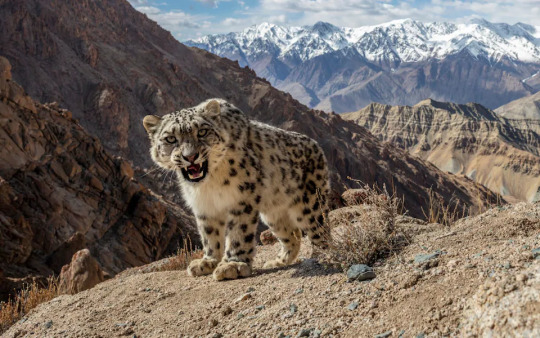
A wildlife photographer has managed to capture intimate images of the rarely spotted snow leopard high in the mountains of India's Ladakh region.
Sascha Fonseca captured the stunning shots during a three-year trap camera photography project from 2019-2021.
The images show the endangered cat, known among locals in northern India as the Ghost of the Mountain, stalking its natural habitat more than 2.5 miles above sea level.


Mr Fonseca said he was attracted by "the challenge to photograph these rare and hard-to-find big cats in their natural environment".
"By sharing their beauty with the world I hope to raise awareness about their existence and the importance to protect their habitats," he added.
Mr Fonseca spent hours in mountains setting up his camera traps, building the weatherproof housing to protect the cameras himself.
Despite contending with brutal working conditions - high altitude, low oxygen levels, rugged terrain, and extreme weather - Mr Fonseca hopes his work will bring heightened awareness to these majestic, endangered creatures.
"Habitat loss due to human expansion is the main problems followed by a number of related issues. That’s why it’s so important to create public awareness."
source
215 notes
·
View notes
Text
The Choglaem
I'M LATE I'M LATE I'M LATE
I almost ran out of time for this week of Bestiaryposting. Fortunately through the power of last-minute panic and the watercolor brush I managed to pull this off pretty quickly.
I do not get snakes. Birds, I can understand. Snakes... meh. I couldn't guess this guy's true identity if I tried, even if the general genre of snake is obvious. My realization is inspired by a real-world constrictor snake and an Ankylosaurus.
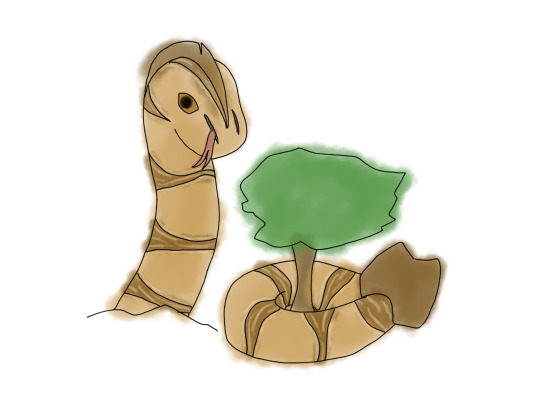
The Choglaem
The Choglaem (Choglaem magnus) is a snake found in northeast Africa, India, and the Middle East. A typical adult specimen is 100–150 feet in length, but the Choglaem continues to grow throughout its old age, and particularly long-lived specimens can become hundreds of feet long. The largest known Choglaem, nicknamed "the World Serpent," is a female who lives in Ethiopia, Somalia, and Kenya. Its length has never been accurately recorded, though it is estimated to be over four centuries old.
Choglaems are striped in tan and brown, with a short crest atop their head. They have a small mouth that seems incapable of fully opening due to cheek-pouches at either side of their face. They possess two long slits atop their head which resemble nostrils or blowholes, but in reality these connect to their mouth and seem to provide a means of breathing and extending their tongue when the cheek-pouches are full.
Adult Choglaem have a large club at the end of their tail that they use to bash in the skulls of their prey. In cases of large animals such as elephants, the preferred prey of adult Choglaem, they will instead constrict their bodies around the creature. Young Choglaem lack this club and will hunt solely through constriction.
A Choglaem's preferred habitat is an area with caves or soft earth. During the hottest part of the day, they will escape underground for protection from the sun, and lie in wait for prey to pass by. They seem to be adept at sensing vibrations through the earth, and will burrow towards the source before swinging their tail out of the ground in an attack.
Choglaem grow continually as they age and do not appear to suffer weakness in their old age. Most Choglaem that make it to a great age die when they are unable to consume enough food to support their growth, when they become so heavy as to be unable to breathe, or when their size slows them down so much as to fall prey to natural disaster or human hunters. Despite large Choglaem being a popular target for hunting, their population is stable enough that the species remains strong, and only the World Serpent is a protected individual.
In recent years, Choglaem have begun to attack vehicles that pass over their hunting grounds, mistaking them for elephants. While a Choglaem will not attempt to eat a car after tasting it and discovering it is made of metal and not flesh, and typically stay away from humans in all contexts, the blow from their tail-club is capable of killing a driver if it is aimed at the windshield. No automobile safety mechanism is capable of protecting against a Choglaem attack. Please use caution when driving near areas known to contain Choglaem.
10 notes
·
View notes
Photo

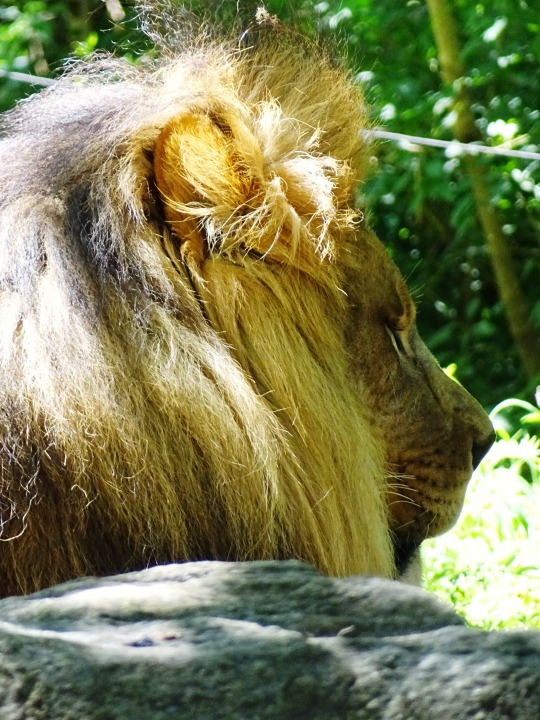




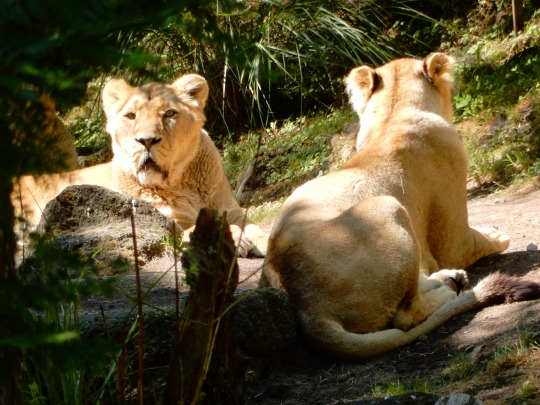
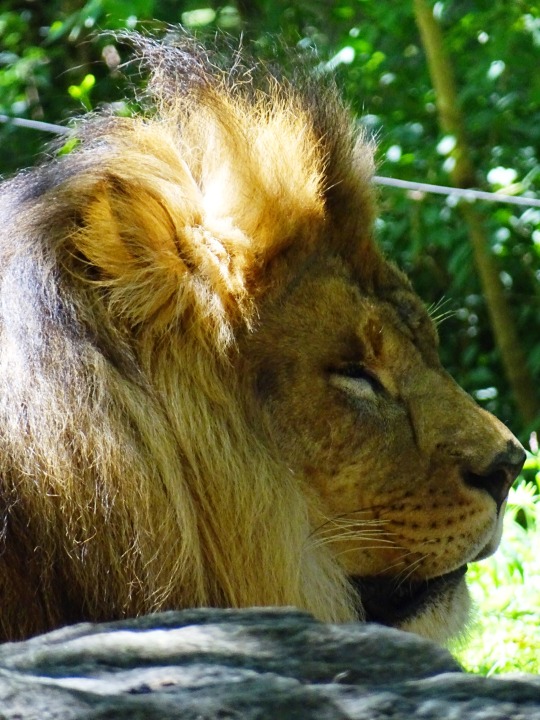

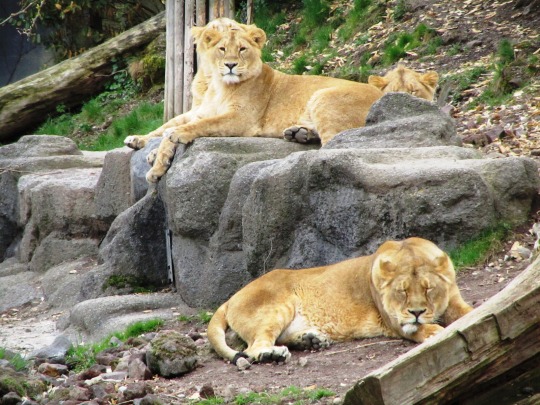
World Lion Day
World Lion Day on August 10 aims to raise awareness about the plight faced by lions. Scientifically known as ‘Panthero Leo,’ lions are one of the most well-known and popular animal species out there. They are called the ‘Kings of the Jungle’ due to their arresting and fearsome personalities created by their great bodies and heavy, shiny manes. A lion’s powerful roar is second to none, and it can be heard even five miles away. Owing to the pop culture icons like Simba from “The Lion King”, lions are also loved by children. However, while lions existed in large populations 100 years ago, today, their numbers are just below 50,000 worldwide as a result of poaching and hunting. World Lion Day, therefore, brings attention to this endangered species by raising funds and amping up protective measures.
History of World Lion Day
The first World Lion Day came into being in 2013. It was headed by Dereck and Beverly Joubert, a couple who are passionate about preservation and wild cats. After realizing that lion populations have drastically decreased worldwide, the Jouberts approached “National Geographic” for the brand’s help. Forming a partnership with them, the couple came up with the Big Cat Initiative (B.C.I.) in 2009. The B.C.I.’s main goal would be to protect and preserve the remaining lion species in the world. While aspects like deforestation, climate change, and human intervention may have impacted lion populations, studies have shown that their extremely low numbers may also have to do with ice ages and natural environmental disasters that have led them to becoming secluded in only a few countries of the world, namely India and South Africa. To date, the B.C.I. has made substantial leaps, from getting 150+ grant awards to reducing almost 3,000 threats to 3,000 wild cats to removing 13,000 life-threatening snares.
The lion comes from the ‘Felidae’ family of cats, and it is considered to be an apex predator. It is the second-largest cat weighing around 300 to 600 pounds, with the first being its cousin, the tiger. An average lion’s body is muscular with a short round head and ears, and a tufty tail. Its sex can be identified through its heavy and luscious mane, which are absent on lionesses. Lions also happen to be the only cats who roam around in large groups known as prides. Scientists believe that lions do so because it is easier to catch prey in the wild. Their natural habitats are savannas and grasslands. You will most likely find a pride of lions near water bodies as they strategically wait for prey to come there for a drink and then pounce on them.
World Lion Day timeline
1758 ‘Felis Leo’ is Coined
Carl Linnaeus, a Swedish zoologist and botanist, invents ‘Felis Leo’ as the scientific name of lions.
1996 Vulnerable Species
The lion is placed on the Red List of the International Union for Conservation of Nature due to its African population decreasing by 45% since 1990.
2009 Big Cat Initiative is Formed
Dereck and Beverly Joubert, in partnership with “National Geographic”, start the Big Cat Initiative to save lions.
2013 The First World Lion Day
The B.C.I. announces the first World Lion Day in order to include the world in lion preservation efforts.
How to Observe World Lion Day
Vow to protect lions
Refuse to buy lion products
Donate your assets
No matter how you choose to spend the day, make sure it is worthwhile by vowing to protect lions. Lions are natural predators that are necessary to keep prey populations in check. Apart from such environmental benefits, lions are extremely beautiful and majestic animals that have ruled the pop culture scene for a long time. So, let’s take a vow to be there for them.
Whether you are looking to buy a new bag or coat, or any other similar paraphernalia, make sure you know where it is coming from. Refuse to buy lion products (or other animal skin products) to reduce sales and market value.
Time and money are the most valuable assets you can give in today’s world. Look out for national and international organizations that protect wild cats, and invest in them by donating your money to the cause. If you cannot donate, you can volunteer your time by either helping the organizations with volunteer work or by promoting the organizations in your circles.
5 Facts About Lions That Will Blow Your Mind
Younglings have spots on their skin
Manes change over time
Cubs are raised together
Females are mightier hunters
Heavy and long sleepers
Young lion cubs are born with spots on their coats, but these tend to fade away as they grow older.
A lion’s mane will change color, going from light to dark, as it grows older.
Lion cubs are generally brought up together by all the females in a pride.
Lionesses are better hunters than their male counterparts, and it is for this reason that they hunt 80% to 90% of the time.
Lions will sleep for at least 20 hours a day.
Why World Lion Day is Important
It’s a celebration of lions
It’s a reminder about the importance of preservation
It’s a celebration of the natural environment
For most of us, “The Lion King” was a huge part of our childhood. We rejoiced at the birth of Simba but also grieved with him over his father’s death. Holding such sweet memories and images, we cannot let the beloved animal go extinct. Let’s come together on August 10 to protect lions from all dangers.
Preservation has become a necessity, more now than ever. We cannot hope to live on a peaceful and resourceful Earth if we keep depleting it of its natural resources, be it water, fuel, or animals. We must preserve and protect the Earth for ourselves as well as future generations.
The natural environment has given us countless gifts. From food for taste and survival to medicinal properties to inspiration for technological inventions, nature has continued to reward us since time immemorial. We must therefore honor, respect, and celebrate it.
Source
#Zoo Zürich#2017#Bronx Zoo#my favorite zoo#New York City#summer 2019#original photography#animal#flora#fauna#outdoors#USA#Schweiz#Switzerland#World Lion Day#10 August#WorldLionDay#landmark#tourist attraction#cityscape#nature#vacation#travel#international day
15 notes
·
View notes
Text
Coastal Guardians
Hello lovely reader! Before we get into this week's topic, I have something exciting to share HEHE .
I've had the opportunity to see some mangroves myself at Kuching Wetlands National Park last month! Also got to see dolphins but wasn't quick enough to whip out my camera to record. Overall, it was a nice break from staring at texts and numbers all day :]
If you're interested you might want to consider Borneo as your next holiday destination (specifically Sarawak).
ALRIGHT let's dive right in!

Mangrove is well-known as a salt-tolerant wetland species of tree that is easily identified with its aerial roots (Bahmanabadi 2022). It is a forest that is typically at the coast line beside land and sea. The weaken the force of waves and serve as a shielding medium, hence the nickname - Coastal Guardians. These unique ecosystems are primarily found in tropical and sub-tropical coastal regions (Bandh et al. 2023) and are considered the sole "blue carbon" forests, believed to have evolved approximately 114 million years ago (Bandh et al. 2023).
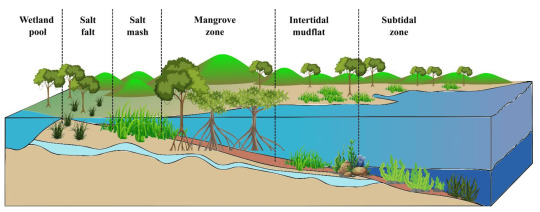
Protecting coastlines
In addition, they act as nature’s own sponges, retaining extra water to stop inland floods, releasing small droplets into the atmosphere to cool the temperature down (Expert Insights 2023).
The mangrove ecosystem offers many essential environmental services, which include shielding coastline against wind, waves, and water currents; mitigation of damages done by hurricanes and tsunamis as well as soil erosion prevention and sediment accumulation (Expert Insights 2023).
In addition, mangrove forests reduce wave height by about 31% (Ahmad Mustafa Hashim, Catherine and Husna Takaijudin 2013), thus helping to prevent devastating floods that could otherwise damage homes, assets and infrastructure. In fact, several studies have shown that nearly 66% of the energy from waves is absorbed by the first one hundred meters of mangroves in a coastline (Mclvor et al. 2012; Menendez et al. 2020).
Supporting bio-diversity
Mangrove trees have unique aerial rooting systems that acts as nutrient cyclers and a breeding ground for fish and other marine life. The mangrove ecosystem has a huge biodiversity with many birds and other animal species. It also supports a unique community of fungi, microorganisms, plant species, with higher animals such as migratory birds (Kandasamy and Bingham 2001).
Moreover, mangroves are essential nurseries to many marine animals such as shrimps, crabs, and different varieties of fishes. They serve as a vital interface between coastal and terrestrial ecosystems, providing support for a diverse range of species, including those from terrestrial, estuarine, and marine environments (Kandasamy and Bingham 2001).
Mitigating climate change
Another remarkable feature of mangroves lies in their capacity to sequester carbon at a rate four times higher than that of rainforests. They draw in carbon dioxide from the air for photosynthesis which is stored within their biomass and sediment. In waterlogged mangrove habitats, decomposition is slowed down which allows it keep the carbon for longer periods of time (Chatting et al. 2022).

Even though we understand how important mangroves are for a healthy environment, they are facing a serious threat globally.
"My only wish now is that the government takes efforts to preserve the dwindling mangrove forests. They wrongly think developing forests is dead investment, that it fetches no returns. After decades of effort, people now realize the blessings these trees can bring. The mangrove trees in private lands also should be preserved.”
- Kallen Pokkudan (Mangrove Man)
He was an environmental activist who was prominent in India’s mangrove conservation and was committed to conserving mangrove vegetation in Kerala region of the Indian coastline. His specialisation was to educate people about mangrove conservation and their significance in shielding coast regions from catastrophes including tsunamis and landfall hurricanes. These moves won Kallen Pokkudan recognition and respect as a defender of Indian mangroves.
The latest findings from the Global Mangrove Alliance present a troubling scenario: 67% of mangroves have already suffered damage or vanished, and an additional 1% is disappearing annually. This ongoing pattern places mangroves in significant jeopardy of total eradication. An initiative taken by the Global Mangrove Alliance seeks to mobilise $10 billion in investments to reach their goal of increasing the mangrove habitat by 20% by 2030. These investments are intended to enhance the resilience of coastal communities and enhance the quality of life for an additional 10 million individuals through various restoration and conservation initiatives.
References:
Ahmad Mustafa Hashim, Catherine, SMP and Husna Takaijudin 2013, 'Effectiveness of mangrove forests in surface wave attenuation: a review', Research Journal of Applied Sciences, Engineering and Technology, vol. 5, no. 18, pp. 4483 - 4488.
Bahmanabadi, Y 2022, Mangroves are powerful coastal guardians, Saratosa, viewed 14 October 2023, <https://www.sarasotamagazine.com/travel-and-outdoors/2022/11/mangroves>.
Bandh, SA, Malla, FA, Qayoom, I, Mohi-Ud-Din, H, Butt, AK, Altaf, A, Wani, SA, Betts, R, Truong, TH, Pham, NDK, Cao, DN & Ahmed, SF 2023, 'Importance of blue carbon in mitigating climate change and plastic/microplastic pollution and promoting circular economy', Sustainability, vol. 15, no. 3, p 2682.
Chatting, M, Al-Maslamani, I, Walton, M, Skov, MW, Kennedy, H, Husrevoglu, YS and Vay, LL 2022, 'Future mangrove carbon storage under climate change and deforestation', Frontiers in Marine Science, vol. 9, no. 781876, pp. 1 - 14.
Expert Insights 2023, The vital role of mangroves in mitigating disasters, Tidal Basin, viewed 14 October 2023, <https://www.tidalbasingroup.com/the-vital-role-of-mangroves-in-mitigating-disasters/>.
Kandasamy, K and Bingham BL 2001, 'Biology of mangroves and mangrove ecosystems', Advances in Marine Biology, vol. 40, pp. 81 - 193.
Mclvor, AL, Möller, I, Spencer, T and Spalding, M 2012, 'Reduction of wind and well waves by mangroves', Natural Coastal Protection Series: Report 1, Cambridge Coastal Research Unit Working Paper 40, pp. 1-27.
Menendez, P, Losada, IJ, Torres-Ortega, S, Siddharth, N and Beck, MW 2020. 'The global flood protection benefits of mangroves', Scientific Reports, vol. 10, no. 4404, pp. 1 - 11.
WWF n.d., The global mangrove alliance: uniting to conserve and restore valuable coastal forests, WWF, viewed 14 October 2023, <https://www.worldwildlife.org/projects/the-global-mangrove-alliance-uniting-to-conserve-and-restore-valuable-coastal-forests>.
9 notes
·
View notes
Text
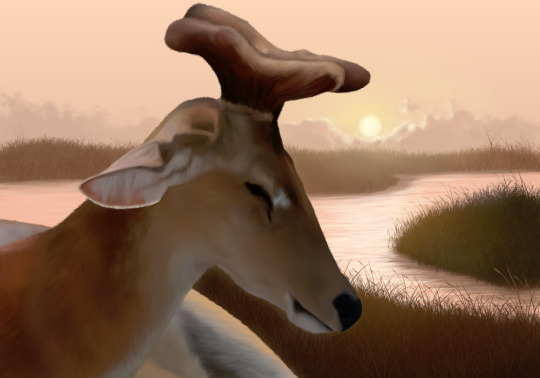
Deercember Day Thirty-One: Sangai | New Beginnings
The sangai (Panolia eldii eldii according to current genetic evidence, though Rucervus eldii eldii according to most scientific literature) is an endemic and endangered subspecies of Eld's deer found only in Manipur, India. It is also the state animal of Manipur. Its common English name is Manipur brow-antlered deer or Manipur Eld's deer, though it is also known as the dancing deer due to a particular behaviour: it is believed that the name sangai (sa "animal" and ngai "in awaiting") was coined from its peculiar posture and behaviour while running; by nature, the deer—particularly the males, even when running for its life—stops occasionally and looks back as if waiting for someone.
Its original natural habitat is the floating marshy grasslands of the Keibul Lamjao National Park, located in the southern parts of Loktak Lake, which is the largest freshwater lake in South Asia. The park covers an area of 40 km² (15.44 mi²) and the home range of the deer in the park is confined to 15 – 20 km² (5.79 - 7.72 mi²). Phumdi is the most important and unique part of the habitat; it is the floating mass of vegetation formed by the accumulation of organic debris and biomass with soil, with thickness varying from few centimeters to two meters. The humus of phumdi is black in colour and very porous and spongy. It floats with 80% of its mass submerged in an annual cycle of rising and falling on Loktak Lake, though this has been disrupted by a hydroelectric dam resulting in the deterioration of the phumdi.
The sangai was believed to be almost extinct by 1950. However, in 1953, six heads of the sangai were found in its natural habitat. Since then, the Manipur state government has taken serious and positive measures toward its protection. The number of sangai listed in the Red Data Book was only 14 in 1975. Despite this, its number has since increased to 204 in 2013, and to 260 in March of 2016. The genetic bottle-necking of this near-extinction event may yet have catastrophic effects on the subspecies, with concerning evidence being found in instances such as albinism despite the small population size.
Culturally, the sangai finds itself embedded deep into the legends and folklore of the Manipuri people. Based on a popular folk legend, the sangai is interpreted as the binding soul between humans and nature. The slaying of the sangai, an unpardonable sin, is conceived as the forceful separation of the harmonious relationship between humans and nature. When humans love and respect the sangai, it is respecting nature. In the sangai, therefore, humans find a way of expressing their love for nature. More information here.
References: Deer*, Background.
* If you recognize the source for the sangai photograph, please let me know. I have several saved, this one from October of 2021, and can no longer find a source.
#Deercember final day complete#genuinely shocked I drew 31 days straight#I am so tired#both from today as it is after ten in the morning#and from the month as a whole#but I am also so fulfilled#third day of dealer's choice you know I had to draw my own OC#but at least had the decency to wait until the end#it's been a wild ride#happy to have done it#Deercember#realHum#Art#Drawing#deer#deer art#stone#The Stone Balancer#sangai#Manipur Eld's deer#Manipur brow-antlered deer#Eld's deer#brow-antlered deer#Panolia eldii eldii#Panolia eldii#Rucervus eldii eldii#Rucervus eldii
6 notes
·
View notes
Text
Hilda's herborium: Lemongrass
Per request of @nav-is-bored, these are commonly distributed in the Phillipines!

Scientific name: Cymbopogon citratus
Native Habitat: India, Sri Lanka, Malaysia and Indonesia
Magickal Qualities:
Communication
Protection
Love
Purification
Expelling negative energy
Lust
Balance
Clarity
Description:
Lemongras is a perennial grass in the family Poaceae grown for its fragrant leaves and stalks which are used as a flavoring. The grass grows in dense clumps and has several stiff stems and slender blade-like leaves which droop towards the tips. The leaves are blue-green in color, turning red in the Fall and emit a strong lemon fragrance when damaged. Lemongrass produces large compound flowers on spikes when grown in the tropics, but rarely flowers when grown in more Northern latitudes. Lemon grass can reach a height of 1.8 m (6 ft) and will grow for several years, typically its economical lifespan is 4 years.

Folklore
Lemongrass has been used as a healing herb in folklore for hundreds of years. This tropical plant is used prolifically in many Asian cuisines.
Historically, lemongrass was often used for its oils. During the 17th century, it was distilled and shipped around the world as part of the perfume industry. At the time, there was very little access to personal hygiene facilities, which meant that anyone who considered themselves of a higher class would anoint themselves with scented oils in an attempt to cover up their own smell. Lemongrass was one of the most popular scents though few could afford it due to its high price.
Lemongrass has been a traditional healing herb in its native regions for a long time, the fact that it’s so helpful in reducing fevers has given it the name “fever grass” in some cultures. It’s one of the most popular medicinal plants in Brazil, with many in the Amazon regarding it as a wonderful sedative when taken in tea form.
Lemongrass is a great magickal plant which you can use to promote openness to new ideas or people. It’s great for providing some magickal help if you struggle with communication. Lemongrass is also thought to attract fae.
One of the most famous uses of Lemongrass essential oil is as an effective and natural insect repellent. It is thought that the citronella content of Lemongrass is responsible for its insect repelling abilties. It blocks the scent that attract mosquitoes and other biting insects such as lactic acid and carbon dioxide, making it harder for insects to locate you. Furthermore, research has shown that citronella helps to reduce mosquito landing by 40 percent.

Quotes about Lemongrass
"I landed in 1980 in Bangkok, and I stopped to eat ten times between the airport and the hotel. It was all lemongrass and ginger and chilies." -Jean-Georges Vongerichten
#hilda's herborium#lemongrass#herbs#witchcraft#paganblr#paganism#nature#witchblr#green witch#herb magick
20 notes
·
View notes
Text
wow, i already got quite a few followers from that post, that's so exciting! this is a blog belonging to a casual primate enjoyer. a lot of my focus is on my country's native wildlife as it's what i do conservation work in, but i really enjoy seeing primates on the side.
i want to share what some of my favourite primates to learn about lately have been. currently i'm interested in lion-tailed macaques.
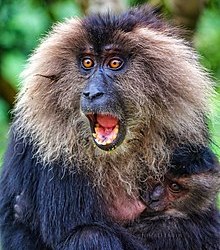

they're endemic to South India and have a really limited range along the southwestern coast, in the rainforests of the Western Ghats/Sahyadri Mountain Range. they're an endangered species... i got really interested in these recently because of their huge lion-like manes that give them a cool wizard-like appearance.
here's an interesting video that goes into their ecology a little, it's largely focussed on human impact on their endangered population, and as a warning does contain some non-censored photos of roadkill of a variety of small species. it's about a decade old, so it doesn't have more current information on how the species is being protected.
youtube
they also get called "beard apes" and "wanderoos", which is just so delightful i love it.
here's a great free documentary focussed on them too!!! it's got a lot of great footage of the macaques in their natural habitat and goes more into their ecology and social structure. it also has more up-to-date information on how they're tackling the issues the lion tailed macaque faces from human presence!
youtube
6 notes
·
View notes
Text
Explore the world of lesser-known species and endangered wildlife through the eyes of dedicated Wildlife Conservation Organizations. Join The Habitats Trust in its mission to conserve and protect these unique animals, contributing to the rich tapestry of India's biodiversity.
#india natural habitats#wild animal protection india#wildlife conservation organizations#wildlife conservation center in india#aquatic wildlife#natural habitats of india#wildlife protection organizations india#protection of natural habitats india
0 notes
Text
Social movements have played a crucial role in challenging external factors to expand freedom throughout history. These movements have sought to address social, political, and economic inequalities and have fought against injustices that limit individuals' freedom to live fulfilling lives. By advocating for change, raising awareness, and mobilizing people to demand their rights, social movements have reshaped societies and expanded freedoms in numerous ways.
1. Civil Rights Movement: In the United States, the Civil Rights Movement of the 1950s and 1960s sought to challenge racial segregation and discrimination. Activists like Martin Luther King Jr., Rosa Parks, and many others organized nonviolent protests, marches, and acts of civil disobedience to demand an end to racial inequality. Their efforts led to the passage of landmark civil rights legislation, such as the Civil Rights Act of 1964 and the Voting Rights Act of 1965, which aimed to dismantle Jim Crow laws and expand political and social freedoms for African Americans.
2. Women's Suffrage Movement: The struggle for women's suffrage and equal rights has been a long-standing social movement around the world. Activists and suffragettes organized campaigns, demonstrations, and advocacy efforts to secure women's right to vote and participate in political decision-making. Over time, these movements led to significant legal and societal changes, expanding women's freedom to engage in civic life, pursue education and careers, and assert their rights in various spheres.
3. LGBTQ+ Rights Movement: LGBTQ+ liberation movements have fought against discrimination, violence, and marginalization based on sexual orientation and gender identity. Through pride marches, grassroots organizing, legal advocacy, and public awareness campaigns, LGBTQ+ rights movements have challenged discriminatory laws and societal prejudices, leading to advancements in legal recognition, marriage equality, and protections against discrimination.
4. Labor Movement: The labor movement has historically sought to address economic inequalities and improve working conditions for laborers. Through strikes, collective bargaining, and advocacy for labor rights, workers have aimed to secure fair wages, safe workplaces, and the freedom to organize and advocate for their interests. Labor movements have played a crucial role in expanding economic freedoms and advancing social protections for workers.
5. Anti-Colonial Movements: In many parts of the world, anti-colonial movements worked to challenge colonial rule and assert the self-determination of oppressed peoples. Leaders such as Mahatma Gandhi in India, Nelson Mandela in South Africa, and numerous others led campaigns of civil disobedience, resistance, and diplomatic efforts to secure independence and freedom from colonial powers.
6. Environmental Movements: Environmental activists and movements have mobilized to address ecological destruction, climate change, and threats to natural habitats. Through conservation efforts, advocacy for environmental regulations, and awareness campaigns, these movements have sought to expand the freedom of present and future generations to live in a healthy and sustainable environment.
These examples illustrate how social movements have historically rallied to challenge external factors that impede freedom. Throughout history, these movements have confronted entrenched power structures, discriminatory practices, and unjust policies to advance the rights and freedoms of marginalized and oppressed communities. By amplifying voices, fostering solidarity, and pushing for systemic change, social movements have been instrumental in expanding freedoms and promoting justice and equality.
Furthermore, social movements have often influenced public discourse, shifting societal attitudes, and paving the way for legislative and institutional changes that elevate the freedoms of individuals and communities. The impact of these movements has been profound, shaping the course of history and contributing to the ongoing struggle for a more just, inclusive, and free society.
3 notes
·
View notes
Text
Beyond Beaches: Embracing Adventure and Tranquility Activities to do in the Maldives

Nestled in the heart of the Indian Ocean, the Maldives embodies paradise on Earth, renowned for its pristine white-sand beaches, crystalline waters, and abundant marine life. Beyond its breathtaking landscapes, this archipelago offers many activities that cater to every traveler’s desire for relaxation, adventure, and cultural exploration. Whether you seek to bask in the sun, explore the ocean’s depths, or immerse yourself in local traditions, the Maldives has something for everyone. Here’s a glimpse into the enchanting activities that await you in this tropical haven, perfect for those considering Maldives tour packages from India.
Snorkelling and Diving:
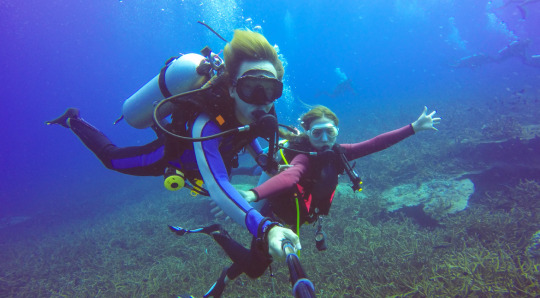
The Maldives is celebrated for its vibrant underwater world, making it a dream destination for snorkelers and divers. With some of the world’s most diverse and colorful coral reefs, you’ll have the chance to encounter mesmerizing marine life, including majestic manta rays, graceful sea turtles, and an array of tropical fish. Popular diving spots like the Banana Reef and Maaya Thila offer an unforgettable opportunity to explore the underwater realm.
Overwater Bungalow Retreat:
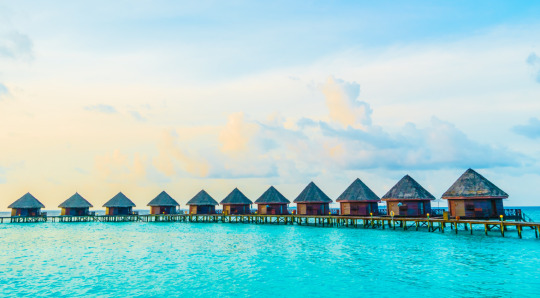
Enjoy luxury by staying in one of the Maldives’ iconic overwater bungalows. These idyllic accommodations offer unparalleled views of the azure ocean, with direct access to the water below. Relax on your private deck, dip into the lagoon from your doorstep, and revel in the beauty of the sunset from the comfort of your room.
Sunset Cruise:

Embark on a romantic sunset cruise and witness the Maldives’ breathtaking landscapes bathed in the warm hues of the setting sun. Whether you choose a traditional dhoni sailboat or a modern luxury yacht, this experience is bound to be a highlight of your trip, offering tranquility and panoramic views of the horizon.
Dolphin Watching:

The Maldives is home to several dolphins that grace its waters with their playful presence. Book a dolphin-watching excursion to observe these intelligent creatures as they frolic in their natural habitat, creating unforgettable memories for families and couples.
Local Island Visits:

To truly immerse yourself in the culture of the Maldives, take a trip to one of the local islands. Experience the daily life of the Maldivian people, sample traditional cuisine, and engage with local artisans. This is a fantastic opportunity to gain insight into the local way of life beyond the luxury resorts.
Water Sports Adventures:

For the thrill-seekers, the Maldives offers a range of exhilarating water sports activities. From parasailing and jet skiing to kite surfing and windsurfing, there’s no shortage of options for those seeking an adrenaline rush against stunning natural beauty.
Spa and Wellness Retreats:

Indulge in ultimate relaxation with a spa treatment set against the backdrop of the ocean. Many luxury resorts in the Maldives offer world-class spa facilities that incorporate traditional techniques and local ingredients, providing a truly rejuvenating experience for both body and mind.
Marine Conservation Efforts:
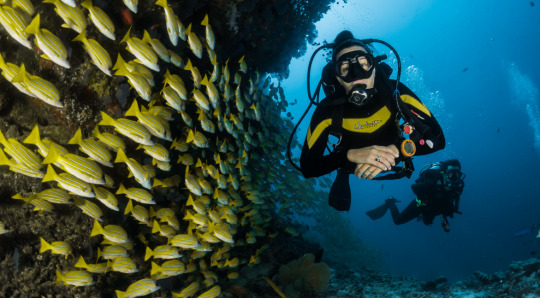
For travelers passionate about preserving the environment, the Maldives presents opportunities to engage in marine conservation efforts. Participate in coral planting initiatives and protect the delicate marine ecosystem that makes the Maldives extraordinary.
Underwater Restaurants:

Delight in a culinary adventure by dining at one of the Maldives’ famous underwater restaurants. With panoramic windows that showcase the underwater world, you can savour gourmet cuisine while surrounded by the enchanting marine life of the Indian Ocean.
Seaplane Tours:
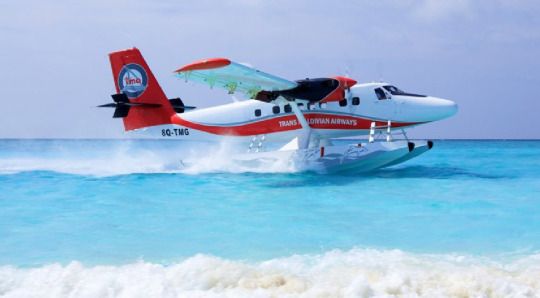
Take to the skies and gain a new perspective on the Maldives’ beauty with a seaplane tour. Marvel at the intricate network of islands and atolls and capture breathtaking aerial views that encapsulate the magic of this tropical paradise.
Conclusion
In the Maldives, every moment is an invitation to experience pure wonder. Whether you’re seeking relaxation, adventure, or cultural enrichment, this tropical haven promises to fulfil your every desire. With its luxurious resorts, stunning landscapes, and a rich tapestry of marine life, the Maldives is undoubtedly a destination on every traveler’s bucket list. If you felt the urge to book your tickets and tour to Maldives just get in touch with Yashvi Tour and Travels.
Article Source : https://www.yashvitours.com/beyond-beaches-embracing-adventure-and-tranquility-activities-to-do-in-the-maldives/
2 notes
·
View notes
Text
Sir Patrick Vallance is the UK government’s chief scientific adviser
The relationship between humans and nature is under intense and increasing strain. The report released today by Ipbes, the Intergovernmental Science-Policy Platform on Biodiversity and Ecosystem Services (akin to the IPCC reports on climate change), provides compelling evidence that humans are overexploiting wild species and habitats. Harmful activities, including habitat destruction, poor farming practices and pollution, have altered ecosystems significantly, driving many species past the point of recovery. In Great Britain alone, of the 8,431 species assessed in the 2019 State of Nature report, 1,188 are threatened with extinction. Globally, there are an estimated one million at risk, with biodiversity declining at a faster rate than at any time in human history.
We cannot ignore biodiversity loss. Biodiversity is the variability that exists among all living organisms, between different species, within species including genetic makeup, and in wider ecosystems. Billions of people rely on wild species for food, clean water, energy, income and health and wellbeing. Annually, crops worth up to £480bn are pollinated by a variety of wild animals, and an estimated 4 billion people depend on natural medicines for their healthcare. These vital ecosystem services are fundamentally based on a healthy environment, and this requires biodiversity. Losing biodiversity leaves species and ecosystems less resilient to challenges such as invasive species or pests, meaning there is an increased risk of whole populations being wiped out and destabilising the entire ecological network. Nature is a finite resource, and human self-interest alone should determine that biodiversity must be protected.
Alongside overexploitation, humans are driving biodiversity loss by destroying, polluting and fragmenting habitats across the globe. Many of the UK’s important peatlands, which provide a home for rare species such as the hen harrier, have been drained for agricultural use. The Amazon rainforest is being cleared to such an extent that it may be near a tipping point beyond which it cannot recover.
The climate crisis is exacerbating the issue. Many species simply cannot adapt to the scale and pace of changing temperatures. For example, warming seas and ocean acidification are devastating coral reefs around the world. This year, the Great Barrier Reef suffered its sixth mass bleaching event since 1998 with more than 90% of reefs affected. In many cases, when an ecosystem loses biodiversity, it becomes less able to store carbon, contributing to further climate change. We have a vicious cycle: climate change leads to biodiversity losses, which in turn leads to further climate change. As governments around the world develop plans to reduce carbon emissions and conserve biodiversity, the message isthe message is simple: we must solve both problems together.
What can be done? Just as science has diagnosed the problem, it can provide solutions. Using strong evidence, such as this Ipbes report, governments can develop effective policy. Integrated and collaborative planning can deliver sustainable solutions which address climate change and biodiversity loss simultaneously, protecting and enriching human lives.
In southern India, scientists, Indigenous communities and local government have worked collaboratively to protect and restore mangrove forests. The trees’ interconnecting large-root systems offer protection against rising sea levels, provide habitats for fish and crustaceans, and clean surrounding water. The trees also draw and store carbon from the atmosphere and encourage carbon-rich sediment deposits. The increase in wildlife has benefited small scale fisheries and tourism. Innovative and effective nature-based initiatives such as these could be implemented throughout different landscapes across the planet.
There are also simple day-to-day things we can do to benefit our environment; for instance, reducing food waste. Currently about 30% of all food produced globally goes uneaten, meaning a significant proportion of the resources, and importantly the land used to grow, process, pack and transport it, is wasted and less able to support biodiversity.
Political will and leadership are needed, and the 15th UN Convention on Biological Diversity conference in December, CBD Cop15, provides the next critical opportunity for governments to commit to real ambitious change.
CBD Cop15 could deliver landmark action and be as important for biodiversity as the Paris Agreement is proving for reducing greenhouse gas emissions. It will set the direction for the next decade of international action and beyond. Governments should agree to halt and reverse biodiversity loss by 2030, and develop evidence-based, actionable plans to do so. An important challenge is to define a reliable and simple integrated metric, like carbon emissions have been used for climate goals. At the end of June, negotiators met in Nairobi for their latest attempt to agree the Post-2020 Global Biodiversity Framework, and while progress was made, it did not go far enough.
The last decade’s targets were not met; the next decade’s must be. Credible delivery plans will be required, and we need a robust mechanism for monitoring progress and holding ourselves to account. CBD Cop15 is the time to finalise the framework, and countries must come to the table prepared to make and support ambitious commitments. This is our chance to secure long-lasting agreements to protect our planet.
#biodiversity loss#overexploitation#tipping points#climate change#amazon rainforest#fishing#agriculture#ipbes#great barrier reef
34 notes
·
View notes
Note
do you have anything cool about water lotuses? 🪷
SURE DO!!!!
water lotuses are surprisingly easy to care for afaik. water lotuses LOVE full sun, srsly need like ~6+ hrs of full sun a day. they love the warmth too— iirc 75-87 degrees on average (F).
For starting one? they like soil rich in clay and also w/ sand.
they do not like flowing water/fountains— keep in mind their natural habitats. don’t submerge their leaves that are growing. fertilize them in the summer time. protect baby lotuses from birds and crustaceans. never let the water they’re in freeze.
ok now for more misc stuff
they’re perennial (w/ the exception of euryale) plants that shoot in the spring, flower in the summer & fall, but go dormant during the winter. dont fertilize them in the winter time
if you repot your water lotus, NEVER submerge leaves, and NEVER disturb the lotus’ roots.
to flower they need >4 hrs of sunshine a day, but tropical lillies need all day in the sun.
you may know this, but water lotus are often important in spiritual stuff and often represent enlightenment.
sometimes, water lotuses and lilies can even cause drainage issues because of how rapid their growth is.
Water lotuses are actually very important in their ecosystems (unsurprisingly), they provide food & shelter for many creatures.
sometimes they can live for 20+ years
water lilies are July’s birth flower
they are indias national flower
they’re native to asia
btw today I found out water lilies and water lotuses are different, they have some subtle differences sigh
for symbolism: they symbolize strength, resilience, rebirth, but in hinduism it symbolizes enlightenment, beauty, fertility, etc.
OK LASTLY HERES SOME PICTURES OF THEM
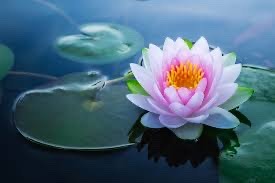

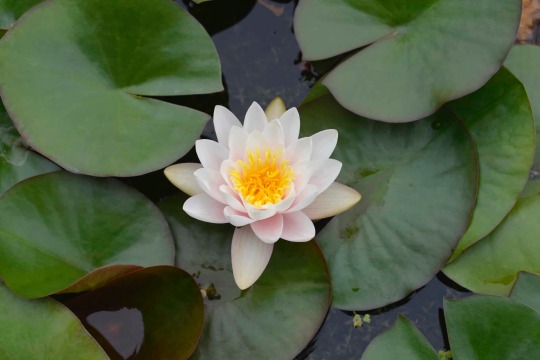

smth I thought was weird is their seeds, take a look:

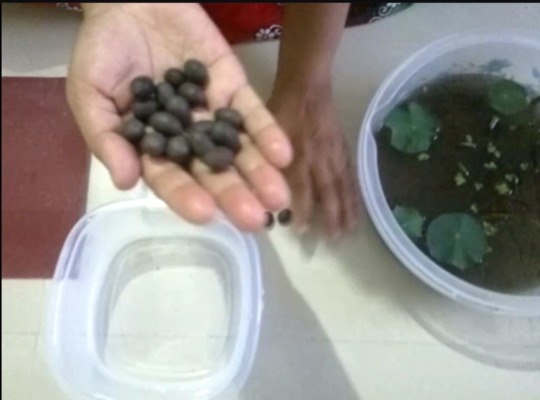
they come in weird things but I don’t wanna put them here bcuz I’m worried abt potential trypophobia triggers
4 notes
·
View notes
Text
THEKKADY
Thekkady, also known as Periyar, is a popular tourist destination located in the Idukki district of Kerala, India. It is renowned for its abundant natural beauty, wildlife, and spice plantations. Here's what you need to know about Thekkady:
Periyar National Park: Thekkady is home to the famous Periyar National Park, a protected area known for its rich biodiversity. The park is centered around Periyar Lake and is known for its population of elephants, tigers, gaurs (Indian bison), deer, and a variety of bird species. Boat safaris and guided walks are popular ways to explore the park and observe wildlife in their natural habitat.
Spice Plantations: Thekkady is known for its aromatic spice plantations. The region's hilly terrain and favorable climate make it an ideal location for growing spices like cardamom, pepper, cinnamon, and cloves. Visitors can take guided tours of the plantations, learn about the cultivation and processing of spices, and even purchase high-quality spices to take home.
Boating on Periyar Lake: Periyar Lake, located within the national park, is a serene water body surrounded by dense forests. Boating on the lake is a popular activity, allowing visitors to enjoy the scenic beauty and spot wildlife along the shores. The boat cruises offer opportunities for birdwatching and provide a unique perspective of the park.
Kathakali and Kalaripayattu: Thekkady is known for its vibrant performing arts scene. Traditional art forms like Kathakali, a classical dance-drama, and Kalaripayattu, a martial art form, are regularly performed in Thekkady. Watching these captivating performances is a must-do cultural experience for visitors.
Nature Walks and Trekking: Thekkady offers several nature trails and trekking routes that take you through lush forests, spice plantations, and picturesque landscapes. Guided nature walks and trekking expeditions allow you to explore the region's natural beauty, spot wildlife, and enjoy panoramic views of the surroundings.
Ayurvedic Spa and Wellness: Thekkady is also known for its Ayurvedic wellness centers and spas. Visitors can indulge in rejuvenating Ayurvedic treatments, massages, and therapies that promote relaxation, healing, and overall well-being.
Bamboo Rafting and Adventure Activities: Thekkady offers thrilling adventure activities like bamboo rafting, where you can paddle through the calm backwaters of Periyar Lake, surrounded by pristine forests. Other adventure activities in the area include trekking, jeep safaris, rock climbing, and rappelling.
Local Cuisine: Thekkady offers a variety of dining options where you can savor the flavors of Kerala cuisine. From traditional Kerala meals served on banana leaves to spicy seafood delicacies, the local cuisine is sure to tantalize your taste buds.
Thekkady is a nature lover's paradise with its wildlife, lush landscapes, spice plantations, and cultural richness. Whether you seek adventure, wildlife encounters, cultural experiences, or a tranquil retreat, Thekkady has something to offer every visitor.
#thekkady#kumily#periyar tiger reserve#kerala tourism#kerala tourist places#natuerlover#natuerphotography
3 notes
·
View notes